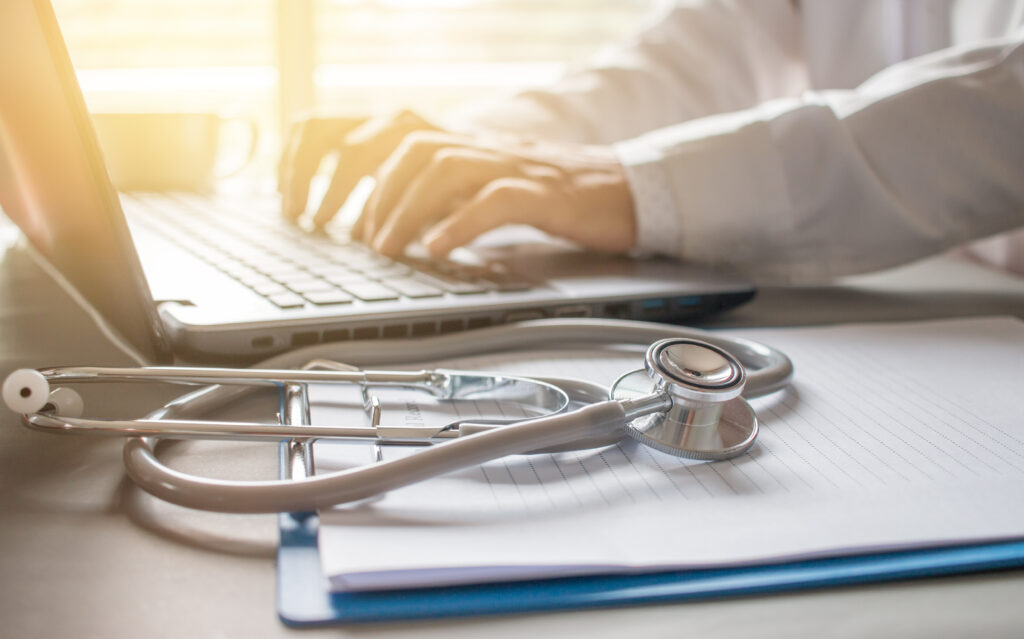The COVID-19 pandemic made especially clear the need for telehealth services that can be used to care for people outside of traditional healthcare settings, such as hospitals and physician offices. A cousin of telehealth, remote patient monitoring (RPM) is particularly useful in the daily management of chronic diseases such as hypertension, COPD, diabetes, obesity, and heart failure.
The good news is that RPM solutions no longer require patients to be tethered by wires to cumbersome medical equipment, but instead come in the form of smartwatches, tablets, activity trackers, and other easily manageable, wireless mobile devices. RPM works by allowing for the remote collection of patient health data such as weight, heart rate, heartbeat irregularity, blood pressure, oxygen level, and more. The collected data is then securely transmitted to the care team via the Internet or another form of communication, such as text alerts if the data reveals any concerns.
Importantly, RPM is also playing an increasing role in reducing medication non-adherence, which is a frequent factor in poor health outcomes, emergency room visits, and hospitalizations/readmissions. In fact, the price of medication non-adherence is around $290 billion in added costs to the healthcare system in the United States each year. It also accounts for up to 50% of treatment failures, causing 125,000 deaths, and 25% of U.S. hospitalizations annually.
Helping Patients Manage Their Medications
Why do people fail to take medications in the manner their healthcare provider prescribed? According to the American Medical Association, there are multiple reasons that can include fear, cost, misunderstanding, mistrust, and complex dosing schedules. But as former U.S. Surgeon General C. Everett Coop famously said, “Drugs don’t work in patients who don’t take them.”
Especially at risk is our rapidly growing senior population, many of whom take numerous medications at different times of the day and may fall victim to non-adherence due to confusion or memory problems. Medication non-adherence for patients with chronic diseases is also common, affecting some 40% to 50% of patients who are prescribed medications to help manage their conditions.
While RPM’s role in medication adherence can be relatively simple, such as automated reminders that come to the patient or their caregiver via text or phone, there are other technologies that offer monitored dispensing of the right medications at the right times to patients directly in their homes. Such devices are pre-loaded with enough medication to make them usable for weeks without refilling. The monitoring aspect of these solutions can further enable physicians to see how well a medication, or mix of medications, is working based on a patient’s remotely collected health data.
The bottom line: “Take your medicine” is not just an adage—it can be as important to good outcomes as the treatment itself.
If there is a bright spot to be found during the pandemic, it is the growing acceptance of solutions such as telehealth and remote patient monitoring. RPM is an effective way to reduce healthcare costs and improve outcomes by advancing medication adherence and by remotely monitoring those with chronic diseases and conditions so that proactive, early intervention can occur to help avoid ER transports, hospital readmissions, and adverse healthcare outcomes.
Carabiner Communications has an active healthcare marketing practice and a growing list of healthcare IT and healthcare services companies on its client roster. Our team understands the nuances of marketing to varied healthcare audiences, from C-level decision makers in hospital settings to surgeons, healthcare practitioners, and consumers. Contact us today to start the discussion on how to build greater awareness with your target audiences, establish thought leadership, and drive sales.

